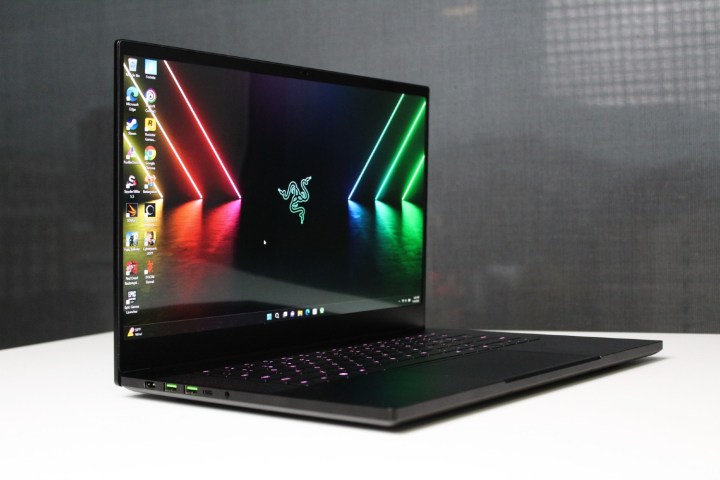
The Razer Blade 14 and Razer Blade 15 are two formidable gaming laptops from Razer, a brand known for its sleek designs and high-performance gaming devices. Both laptops cater to gamers seeking a premium gaming experience but differ in size, specifications, and intended use.
The Razer Blade 14 is a compact gaming laptop with a 14-inch display, making it a more portable option than its larger counterpart. Despite its smaller size, the Blade 14 doesn’t compromise on power, featuring high-end components to deliver a robust gaming performance. It is an ideal choice for gamers who prioritize portability without sacrificing gaming capabilities.
On the other hand, the Razer Blade 15 is a larger gaming laptop with a 15-inch display, providing a more immersive gaming experience with a larger screen real estate. The Blade 15 is available in various configurations, including advanced models with higher refresh rates and powerful GPUs, making it suitable for gamers who want top-tier performance and a larger display.
In this comparison, we’ll delve into the key differences and similarities between the Razer Blade 14 and Razer Blade 15, helping you choose the gaming laptop that aligns with your preferences and gaming needs.
Specifications
| Razer Blade 14 | Razer Blade 15 | |
| Dimensions | 310.7 x 228 x 17.9 mm (12.23 x 8.97 x 0.70 inches) | 355 x 235 x 16.99 mm (13.98 x 9.25 x 0.67 inches) |
| Weight | 4.05 pounds | 4.40 pounds |
| Processor | AMD Ryzen 9 7940HS (8 cores, 16 threads, 16MB Cache, up to 5.2GHz) | Intel Core i7-13800H (14 cores, 20 threads, 24MB cache, up to 5.2GHz) |
| Graphics | Up to Nvidia GeForce RTX 4070 (8GB GDDR6) | Up to RTX 4070 (8GB GDDR6) |
| RAM | Up to 32GB DDR5 5600 MHz | Up to 32GB DDR5 5200 MHz |
| Display | 14-inch QHD+ 240Hz, AMD FreeSync Premium, Anti-Glare Matte Finish, Up to 100% DCI-P3 | 15.6-inch QHD 240Hz, 100% DCI-P3, G-Sync, 2.5ms |
| Storage | 1TB SSD (M.2 NVMe PCIe 4.0 x4) | Up to 2TB PCIe Gen4 M.2 (2 TB NVMe 1-sided drive) |
| Ports | 2 x USB 3.2 Gen 2 Type-A Ports 2 x USB 4 Type-C with Power Delivery and Display Port 1.4 Charging supported with 20V USB-C chargers with PD 3.0 HDMI 2.1 output |
2 x Thunderbolt 4 (USB 3.2 Gen 2) Type-C with Power Delivery and Display Port 1.4 with iGPU output Charging supported with 20V USB-C chargers with PD 3.0, up to 100W 3 x USB-A 3.2 Gen 2 HDMI 2.1 output UHS-II SD Card Reader |
| Wireless | Wi-Fi 6E and Bluetooth 5.3 | Wi-Fi 6E and Bluetooth 5.2 |
| Webcam | 1080p, Windows Hello IR webcam | 1080p, Windows Hello IR webcam |
| Operating system | Windows 11 Home | Windows 11 Home |
| Battery | 68.1WHr | 80WHr |
| Price | $1,999 | $2,199 |
Prices and configuration
The Razer Blade 14 (2023) was first introduced in June and is currently offered as a base model equipped with an RTX 4060 for $1,999. Razer allows users to enhance their gaming experience by upgrading to an RTX 4070 GPU for $2,399. Additionally, users can opt for a Mercury (gray) colored chassis for an additional cost. As of the current writing, the Razer Blade 14 (2023) is readily available for purchase through various online retailers, including Amazon, Best Buy, B&H, and Razer’s official website.
Launched in February of this year, the Razer Blade 15 2023 offers a starting configuration with an RTX 4060, priced at $2,199, which positions it slightly higher in cost than its smaller counterpart. For an extra $200, users can acquire a model featuring the RTX 4070 graphics card. Similar to the Razer Blade 14, the 2023 version of the Blade 15 is available for purchase on Razer’s official website and through other retailers such as Amazon, B&H, and Best Buy.
Design
Differing in size, the Razer Blade 14 (2023) is narrower by 44.45mm and has a depth of around 7mm less than the Blade 15 (2023). However, it is slightly thicker at 17.78mm. Available in stylish black and mercury color options, the 14-inch laptop, weighing 4.05 pounds, is 0.13 pounds lighter than previous models, making it one of the lighter gaming laptops. It features two USB Type-A ports, two USB4 Type-C ports, an audio jack, and an HDMI 2.1 port, though it lacks a dedicated RJ45 port.

In contrast, the Razer Blade 15 (2023) has larger dimensions than its 14-inch counterpart but remains relatively thin for a gaming laptop. Only available in black, it weighs around 4.40 pounds, making it 0.35 pounds heavier than the Blade 14. The Blade 15 offers a 15.6-inch display and provides more ports, including a 3.5mm audio jack, an HDMI 2.1 connection, two USB Type-C ports, three USB Type-A connections, and an SD card reader.
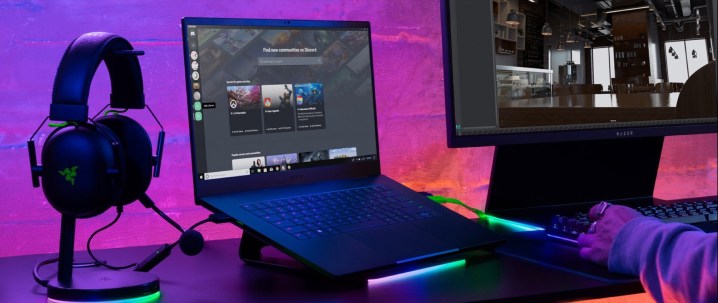
Both laptops share a similar chassis design made out of anodized aluminum, devoid of typical gamer aesthetics like RGB lighting or aggressive design elements. The black color variants of these laptops feature a matte finish, though this finish tends to attract fingerprints. Thanks to vapor chamber cooling technology, both laptops effectively manage low system temperatures even under heavy loads. The Blade 14 comes in a special Mercury edition, a combination of silver aluminum and black plastics.
Display
The Razer Blade 14 (2023) comes with a 14-inch display offering a QHD+ resolution (2560 x 1600) and a fast 240Hz refresh rate. It offers a 16:10 aspect ratio, offering more real estate on the top and bottom. The display is also AMD FreeSync Premium-certified and offers a 100% DCI-P3 color gamut coverage with a peak brightness of 600 nits.
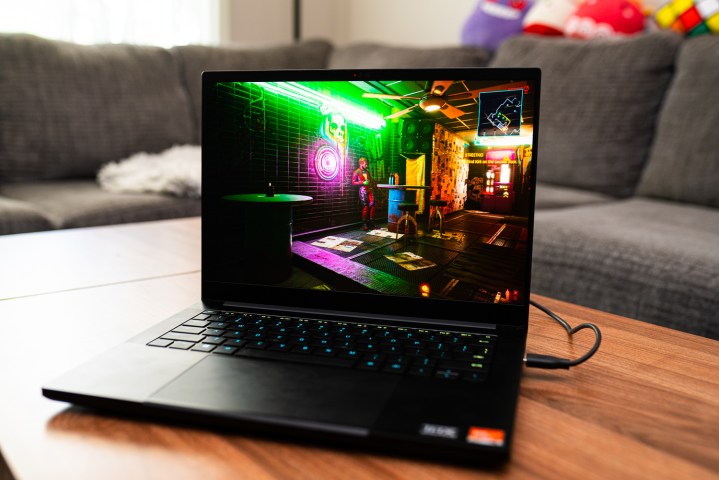
The Razer Blade 15 (2023) comes with a similar display that can offer a refresh rate of 240Hz and 100% DCI-P3 coverage, but you get a larger 15.6-inch screen with a QHD 2560 x 1440 resolution and a 16:9 aspect ratio. Instead of FreeSync, the display on the Blade 15 comes with Nvidia’s G-Sync technology that helps prevent screen tearing.
Apart from their size, both displays offer similar specifications, although the Blade 14 has an edge over the Blade 15 as it comes with a higher aspect ratio.
Performance
The 2023 version of the Blade 14 laptop is equipped with the AMD Ryzen 9 7940HS processor, boasting 8 cores and 16 threads, and can reach impressive turbo clock speeds of up to 5.2GHz. Regarding graphics, the base model is fitted with an RTX 4060 GPU, but for those seeking superior performance, an upgrade to the RTX 4070 is available. The Razer Blade 14 also comes with a 1TB M.2 PCIe 4.0 SSD and up to 32GB of DDR5 RAM running at 5600 MHz. Plus, you have the flexibility to increase both the RAM and storage as per your needs.
The Razer Blade 15 (2023) is powered by the Intel Core i7-13800H processor, which comes with six performance, eight efficiency cores, and 20 threads. The i7-13800H also has a larger 24MB cache than the 16MB cache on the Ryzen 9 7940HS, though both processors have the same turbo clock speeds. Like the Blade 14, the 15-inch version has two GPU configurations: an RTX 4060 or the more powerful and expensive RTX 4070. The Blade 15 comes with a 1TB M.2 NVMe PCIe 4.0 SSD and 16GB of 5200MHz DDR5 memory; however, there is the option of going for a 2TB SSD with 32GB of DDR5 memory.
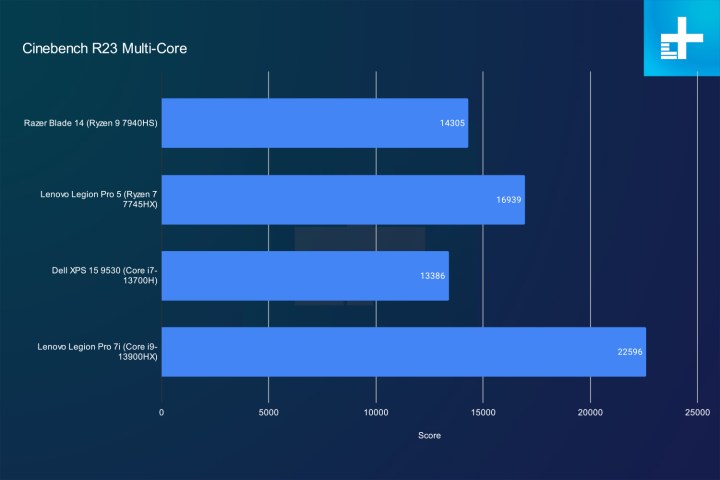
In terms of raw CPU performance, you should see better numbers on the Blade 15, as the Intel CPU is faster and more powerful than the AMD chip found on the Blade 14. Notably, the Razer Blade 15 offers a TGP of 125W be it the RTX 4060 or the 4070, while the Blade 14 comes with a higher 140W TGP, which is a bit odd considering the latter is a smaller laptop. Essentially, the higher TGP on the Blade 14 should allow it to offer slightly better graphics performance, but practically, you might only see a difference of up to 5%.
Which one should you pick?
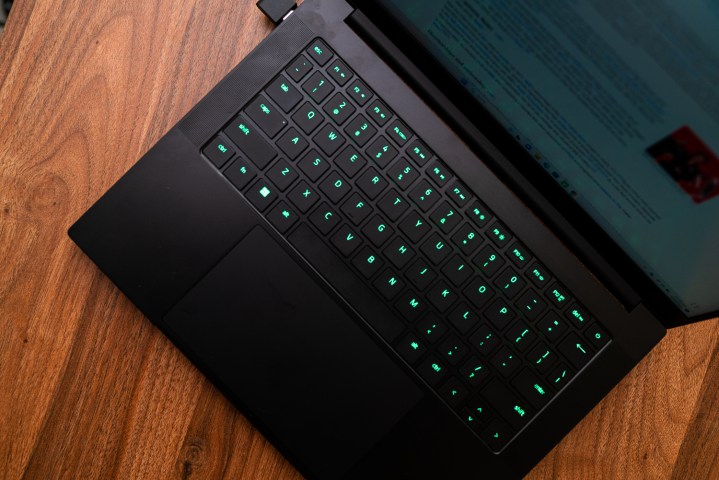
The Razer Blade 14 and Blade 15 are nearly identical in terms of design and aesthetics; however, the compact nature of the Blade 14 makes it suitable for anyone who is always on the go. The Blade 14 also offers a taller display if that’s something you care about. In terms of performance, the Blade 15 has a faster and more capable CPU and should outperform the AMD Ryzen 9 7940HS on the smaller Blade 14.
Ultimately, the choice between these two laptops depends on your individual needs. Do you want a bigger display or a more compact form factor? If you’re in the market for a light laptop that can effortlessly handle contemporary games, then the Razer Blade 14 (2023) should be your ideal pick. However, if your primary requirement for your upcoming gaming laptop is an enhanced processor and a conventional 15.6-inch G-Sync compatible display, then the Razer Blade 15 (2023) would be your go-to choice.



